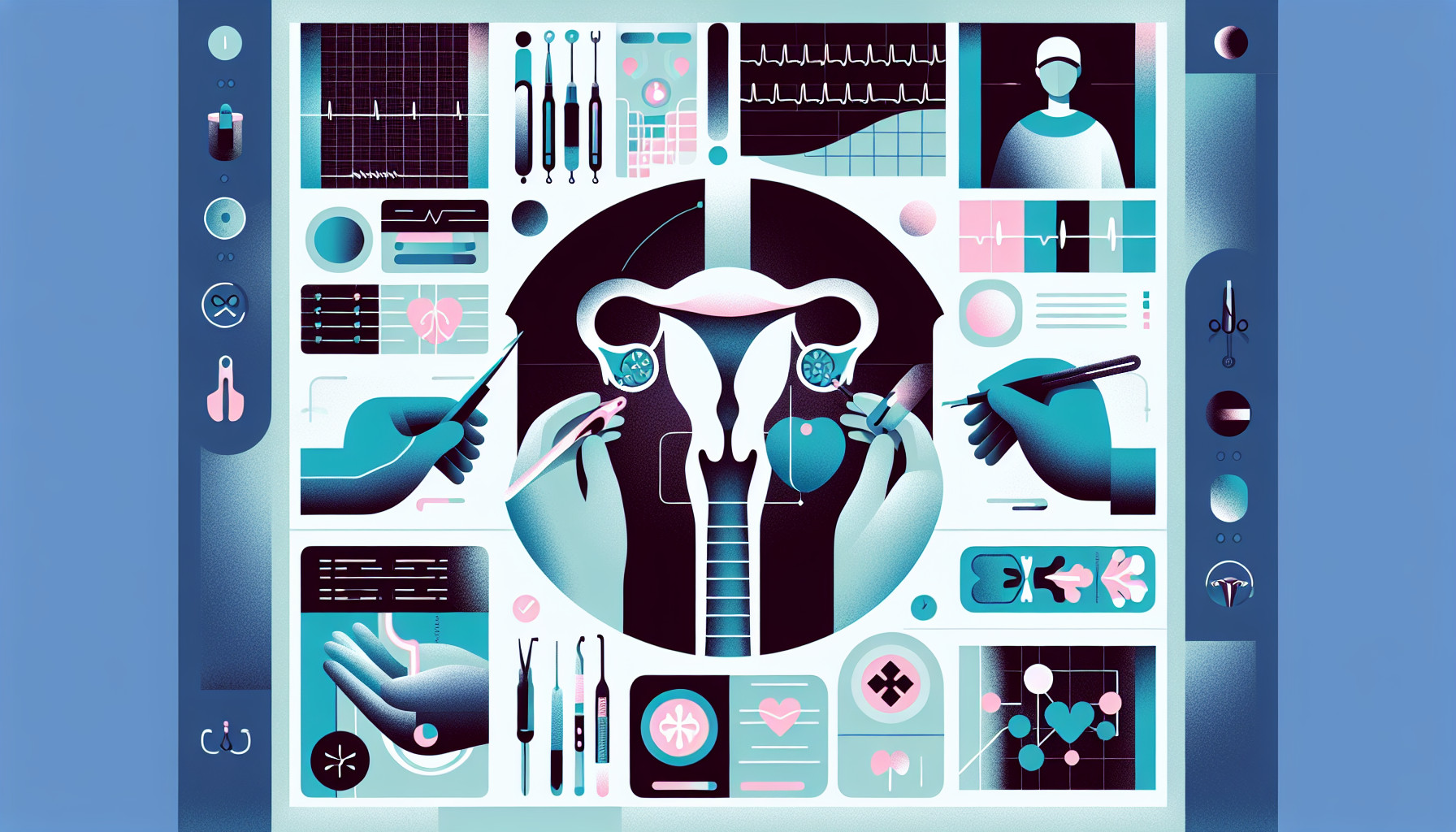Our Summary
This research paper is about a study on a treatment for heavy menstrual bleeding, a common issue among women. Instead of a hysterectomy (surgery to remove the uterus), the researchers looked at a less invasive procedure called thermal balloon endometrial ablation using a Foley’s catheter.
They studied 114 women who were experiencing heavy periods and didn’t want more children. These women had either not responded to standard treatments or couldn’t take medication for the issue. The procedure involved inflating a balloon for 3 minutes and then deflating it.
Three months later, they looked at how well the treatment had worked by checking the women’s menstrual bleeding, ultrasound results, number of days they bled, their pain levels, and their responses to a questionnaire about their period.
The results showed that most patients had a significant improvement in their symptoms, such as less bleeding and pain, and more regular menstrual cycles. The treatment was successful for 88.6% of the women, but 11.4% did not see any change. Some women needed further treatment due to complications like infection or issues with the balloon.
In conclusion, the study suggests that this procedure is an effective treatment for heavy menstrual bleeding.
FAQs
- What is thermal balloon endometrial ablation using a Foley’s catheter?
- What parameters were used to evaluate the effectiveness of the treatment?
- What was the success rate of the thermal balloon endometrial ablation procedure in the study?
Doctor’s Tip
A helpful tip a doctor might give a patient about endometrial ablation is to discuss any concerns or potential risks with their healthcare provider before undergoing the procedure. It’s important to have a clear understanding of the potential benefits and possible complications associated with the treatment. Additionally, patients should follow their doctor’s post-procedure instructions carefully to ensure a successful recovery.
Suitable For
Patients who are typically recommended for endometrial ablation are those who have heavy menstrual bleeding and have not responded to other standard treatments or are unable to take medication for the issue. Additionally, patients who do not want to have more children are good candidates for this procedure.
It is important to note that endometrial ablation is not recommended for women who are pregnant, have certain medical conditions that may affect the procedure, or who have a history of endometrial cancer. It is always best to consult with a healthcare provider to determine if endometrial ablation is the right treatment option for individual patients.
Overall, this study provides valuable insight into the effectiveness of thermal balloon endometrial ablation using a Foley’s catheter as a treatment for heavy menstrual bleeding, showcasing positive results for the majority of patients who underwent the procedure.
Timeline
Timeline:
Before endometrial ablation:
- Patient experiences heavy menstrual bleeding
- Patient has not responded to standard treatments or cannot take medication
- Patient opts for thermal balloon endometrial ablation using a Foley’s catheter
After endometrial ablation:
- Procedure involves inflating a balloon for 3 minutes and then deflating it
- Three months post-procedure, patient’s menstrual bleeding, ultrasound results, number of bleeding days, pain levels, and period questionnaire are evaluated
- Results show significant improvement in symptoms for most patients, with 88.6% experiencing success
- Some patients may require further treatment due to complications like infection or issues with the balloon
Overall, the study suggests that thermal balloon endometrial ablation using a Foley’s catheter is an effective treatment for heavy menstrual bleeding.
What to Ask Your Doctor
Some questions a patient should ask their doctor about endometrial ablation include:
- What are the potential risks and complications associated with thermal balloon endometrial ablation?
- How long does the procedure take, and is it performed under general anesthesia?
- What is the recovery process like, and how soon can I expect to return to normal activities?
- Will I still be able to have children after undergoing endometrial ablation?
- How long can I expect the results of the treatment to last?
- Are there any alternative treatments available for heavy menstrual bleeding that I should consider?
- What kind of follow-up care will be needed after the procedure?
- What are the chances of needing further treatment or experiencing complications after the procedure?
- How experienced is the medical team in performing thermal balloon endometrial ablation?
- Can you provide me with more information about the success rates of this treatment and any potential side effects I should be aware of?
Reference
Authors: Khadawardi K, Nasief H, Hassan A, Katib YA, Aldardeir N, B Alwazzan A. Journal: SAGE Open Med. 2025 Feb 27;13:20503121251322325. doi: 10.1177/20503121251322325. eCollection 2025. PMID: 40026349
